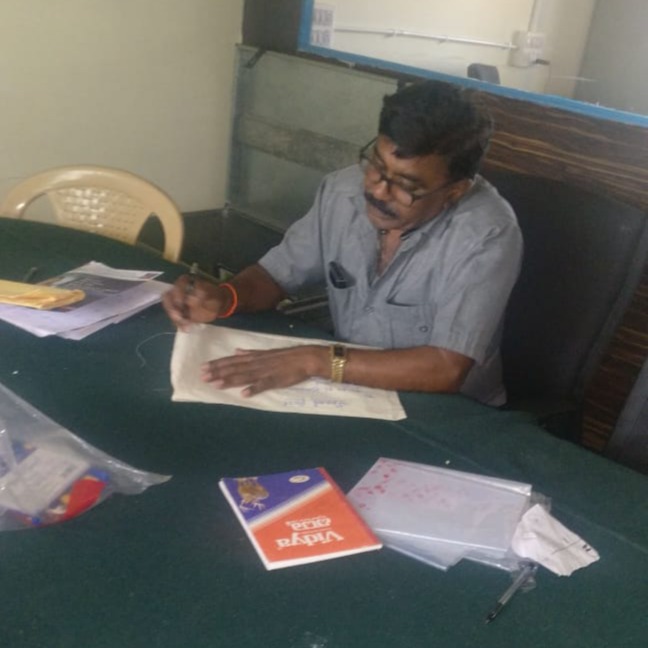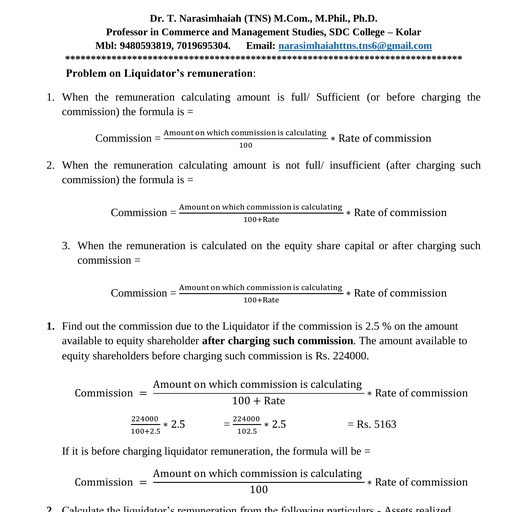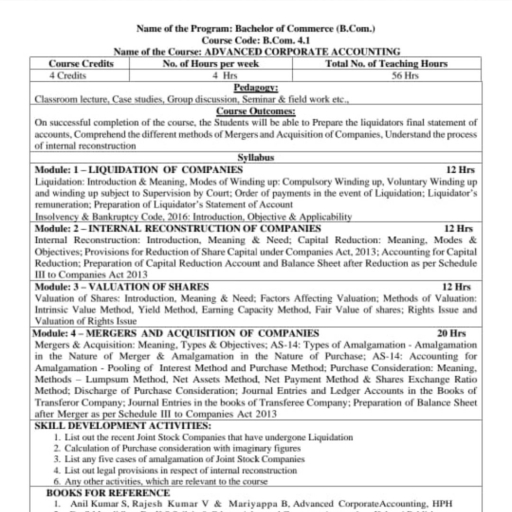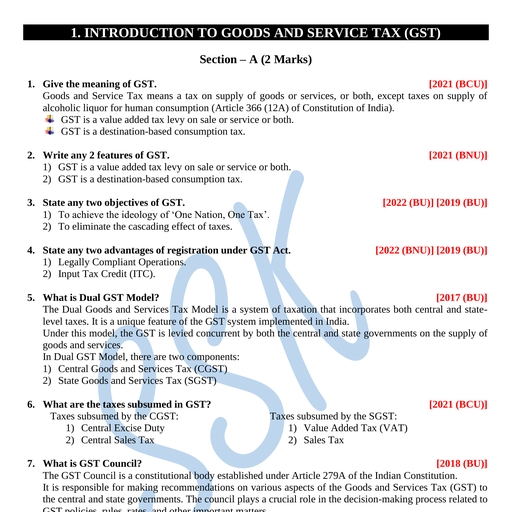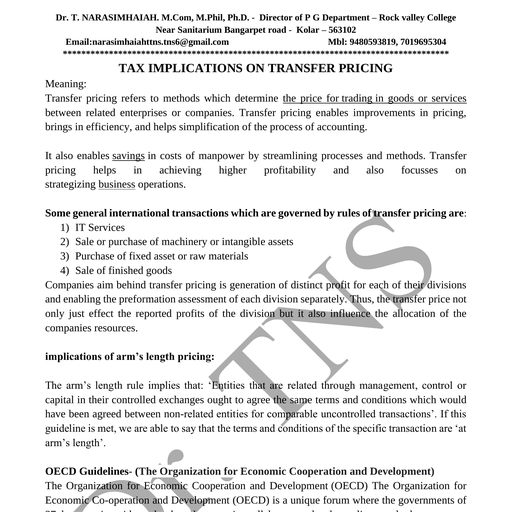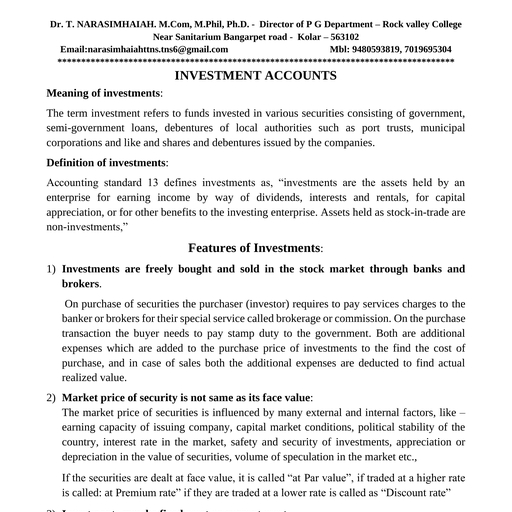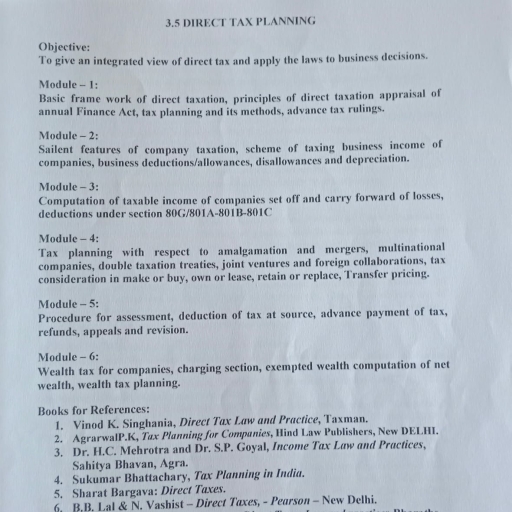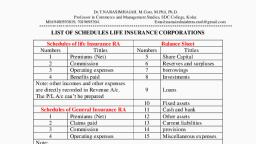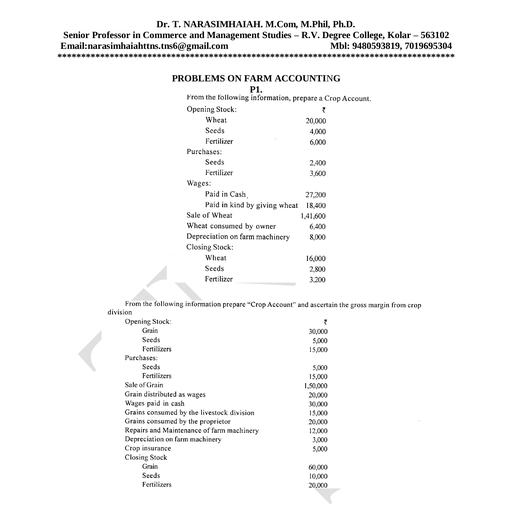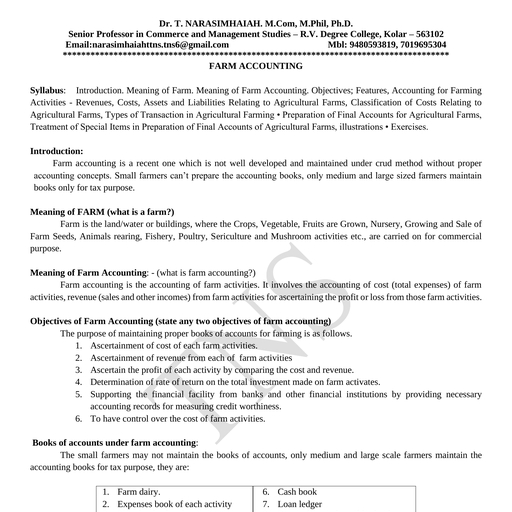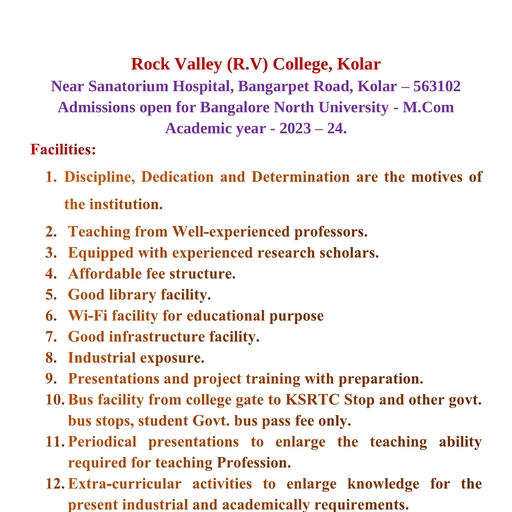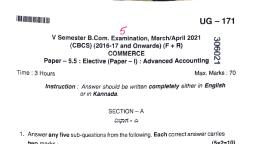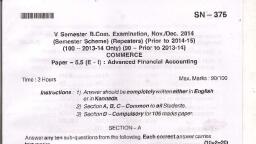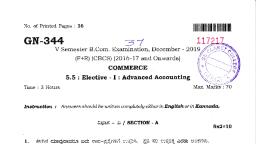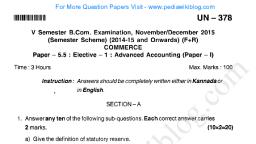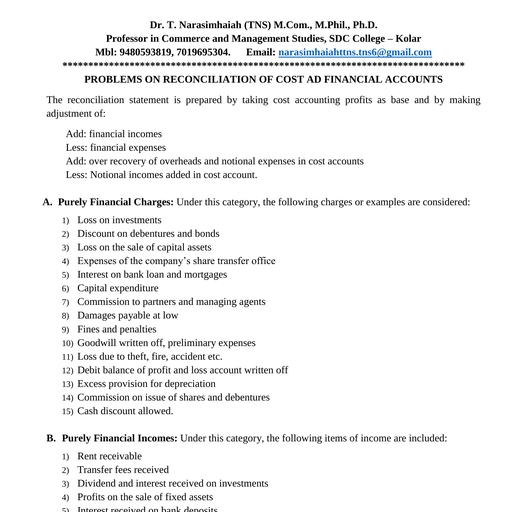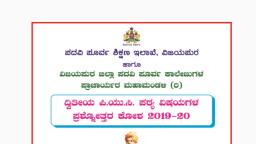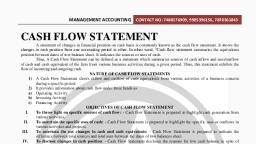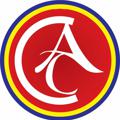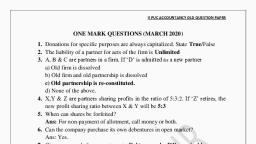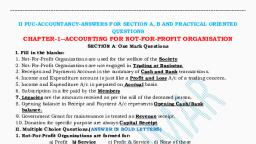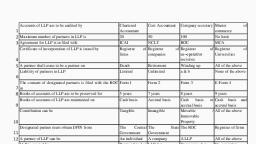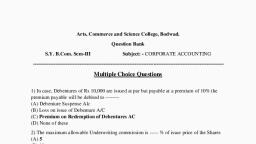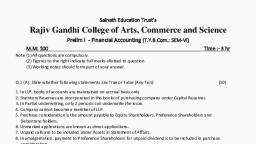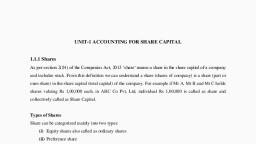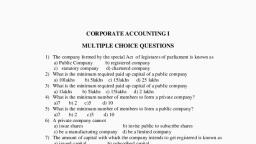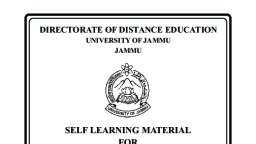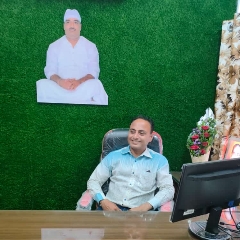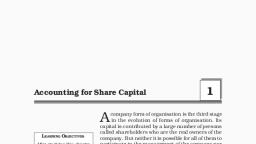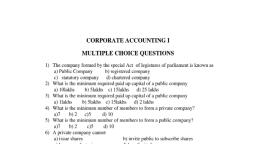Page 1 : Dr. TNS - M.Com. M.Phil. Ph.D. Prof. in Commerce & Management Studies., Principal, Shri Chaitanya Academics, Kolar., ******************************************************************, UNDERWRITING OF SHARES AND DEBENTURES, MEANING OF UNDERWRITING:, Underwriting is an arrangement made in between the issuing company and the underwriter,, towards the issue of shares and debentures for an underwriting commission. The person who, enters into an agreement is called the underwriter., UNDERWRITER:, Underwriter is a person who enters into an agreement with the co. for the issue of agreed number, of shares and debentures for an agreed rate or the rate of commission prescribe by the companies, Act., , PROVISIONS OF CO’S ACT, REGARDING ISSUE OF SHARES AND DEBENTURES, The following are the provisions of co.’s act regarding the issue of shares and debentures’;, a) Underwriters’ recourses shall be specified in the prospectus or statement in lieu of prospectus., b) The number of shares and debentures underwritten by each underwriter shall be disclosed., c) Underwriting commission can’t be paid unless shares and debentures underwritten are offered to, the public, d) The copy of underwriting agreement shall be filed with the registrar of co., e) Noncompliance of any of the above provisions is punishable to each responsible officer up to a, maximum fine of Rs. 500., f) The Underwriting commission is payable only when it is specified in the Articles of association., g) The total amount of underwriting commission and brokerage paid on issue of shares and, debentures should be shown in the assets side of the balance sheet under the head of, miscellaneous expenses and losses., h) Provisions of sec. 76 of the Co’s Act, 1956., i) Underwriting commission is payable only when it is stated in the Articles of association., j) The rates of Underwriting commission is:, 5% on issue price of shares and, 2.5% on issue price of debenture, k) The rates of underwriting commission shall be shown in the prospectus or statement in lieu of, prospectus., , SEBI GUIDELINES FOR UNDERWRITING OF SHARES AND DEBENTURES, a) Underwriting is not mandatory: Underwriting is not compulsory, but if the issuer is failed to, collect the minimum subscription within the specified period, it shall refund the full amount, collected still to that date., , TNS Tutorials, Opp. Sri Rama Textiles, Near Shanthi Stores, Doddapet – Kolar., email:
[email protected] Mbl: 9480593819, , Page 1
Page 2 : Dr. TNS - M.Com. M.Phil. Ph.D. Prof. in Commerce & Management Studies., Principal, Shri Chaitanya Academics, Kolar., ******************************************************************, b) Refund in case of Underwriting: when the co. is not able to procure minimum subscription, within 120 days from the date of underwriting agreement, it shall refund the full amount collected, still to that date., c) Disclosure of underwriter’s worth to the SEBI: the lead manager of Underwriting shall, observe the underwriters development and outstanding commitments of underwriter, and that, shall be communicated to the SEBI., d) Filing of underwriting agreement: the copy of underwriting agreement shall be filed with the, stock exchanges in which it is listed., e) Rates of Underwriting commission as per SEBI: the rates Underwriting commission is, specified by the co’s act, 1956, however the rates revised by the SEBI are:, f) On equity shares: @ 2.5%, g) On preference shares and convertible or non-convertible shares:, For amounts up to Rs. 5 laths:, h) 2.5% on the amounts devolving by the underwriters, i) 1.5% on the amounts subscribed by the public., For amounts in excess of Rs. 5 Lakh:, j) 2% on the amounts devolving by the underwriters, k) 1% on the amounts subscribed by the public, , THE ADVANTAGES OR IMPORTANCE OF UNDERWRITING OF SHARES ARE:, (i), , Assurance of Adequate Finance., Underwriting is a guarantee given buy the underwriters to take up the whole issue or remaining, shares, not subscribed by public. In the absence an underwriting agreement, a company may face, a situation where even minimum subscription may not receive and, it will have to go, into, liquidation. In case of an existing company, it may have to postpone its projects for which the, issue was meant. As a result of an underwriting contract, a company has not to wait till the shares, have been subscribed before entering into the required contracts for purchase of fixed assets etc. it, can go ahead with its plan confidently. Thus, underwriting agreement assures of the required, funds within a reasonable or agreed time., , (ii), , Benefit of Expert Advice., An incidental advantage of underwriting is that, the issuing company gets the benefit of expert, advice. An underwriter of repute would go into the soundness of the plan put forward by the, company before entering into an agreement and suggest changes wherever necessary, enabling the, company to avid certain pitfalls., (iii) Increase in Goodwill of the Company, The good underwriters being men or firms of financial integrity with established reputation. As, we have already explained that underwriters satisfy themselves with the financial integrity of the, TNS Tutorials, Opp. Sri Rama Textiles, Near Shanthi Stores, Doddapet – Kolar., email:
[email protected] Mbl: 9480593819, , Page 2
Page 3 : Dr. TNS - M.Com. M.Phil. Ph.D. Prof. in Commerce & Management Studies., Principal, Shri Chaitanya Academics, Kolar., ******************************************************************, company and viability of the plan, the investors therefore, runs much less risk when they buy, shares or debentures which have been underwritten by them. They assure soundness of each, company. Thus, good underwriters increase the goodwill of the company., (iv) Geographical Dispersion of Securities., Generally, underwriters maintain working arrangement with other underwriters and spread, throughout the country and in other countries too and as such, they are able to tap the financial, resources for the company not only in on particular area but also in other areas as well. In this, way marketability of securities increases and geographical dispersion of shares and debentures., (v) Service to Prospective Buyers., Underwriters render useful services to the perspective buyers of securities by giving them expert, advice regarding the safe investment in sound companies. Sometimes they publish information, and their expert opinion in respect of various companies. Thus, they render useful services to the, buyers of securities., , TYPES OF UNDERWRITING OF SHARES AND DEBENTURES, 1. On the basis of no. Of Shares/Debentures underwritten, a) Partial U/W, b) Complete U/W, 2. On the basis of Liability of Underwriters, a) Firm U/W, b) Open or Pure U/W, Bases, On the basis of, shares, underwritten by, the underwriters, , On the basis of, shares offered to, public by the, underwriters, , TYPES OF U/W, Complete, underwriting, Partial, underwriting, Open or pure, underwriting, , Firm underwriting, , MEANING, It is one, in which the whole issue is underwritten by one, or more underwriters, It is one, in which only a part of the whole issue is, underwritten by one or more underwriters. For the, remaining balance of shares the co. is assumed as the, underwriter, In case of open or pure underwriting, the underwriters, agreed to take up, only when all the underwritten shares, and debentures are not subscribed by the public., Under Firm underwriting, the underwriters are committed, to take up an agreed number of shares, in addition to the, share and debentures unsubscribed by the general public., In this case there is a definite commitment to the, shareholders., , TNS Tutorials, Opp. Sri Rama Textiles, Near Shanthi Stores, Doddapet – Kolar., email:
[email protected] Mbl: 9480593819, , Page 3
Page 4 : Dr. TNS - M.Com. M.Phil. Ph.D. Prof. in Commerce & Management Studies., Principal, Shri Chaitanya Academics, Kolar., ******************************************************************, DIFFERENCE BETWEEN OPEN OR PURE U/W AND FIRM U/W, BASIS, , OPEN UNDERWRITING, , Underwriters liability, , It is conditional; Underwriters, have to take up shares or, debentures only when they are, not subscribed by the public., , Arise of liability, , Underwriter liability arise only, from open underwriting, , Common underwriting, , Open under writing is always, common., , Binding of the co., , The co. is not binding to issue, any number of shares to the, underwriters own., , FIRM UNDERWRITING, It is not conditional. The, underwriters have to take agreed, number of shares or debentures, in, addition to the public unsubscribed, shares or debentures, Underwriter liability arise from, both open and Firm underwritings, Firm underwriting always goes with, open writing. They is no only firm, underwriting., The co. is binding to preserve and, issue agreed number of shares to, the firm underwriters., , MARKED AND UNMARKED APPLICATIONS, Marked applications: the applications which are affixed with the official stamp or any symbol, of the respective underwriters for identifying the applications recommended by them are the, marked applications. It is necessary to find the total number of shares and debentures issued by, each of the underwriters., Unmarked applications: the shares and debentures applications, which are directly issued by the, co. to the public or applications which do not contain the official stamp of any underwriters are, called as unmarked applications., Treatment of unmarked and marked applications:, The unmarked and marked applications are deducted from the gross liability of underwriters in, the following manner:, 1. Unmarked Application:, a) In case of Partial Underwriting: in case of partial underwriting the unmarked applications are, credited (deducted) from the company gross liability., b) In case of Complete Underwriting: are deducted from the gross liability of each underwriter by, distributing in their gross liability ratio., 2. Marked Applications:, The Marked Applications are directly allocated (deducted) from the gross liability of each, underwriter after the deduction of unmarked applications., GROSS LIABILITY RATIO: The gross liability is the proportion of shares or debentures, underwritten by each of the underwriter. It is the base for the sharing of unmarked applications, , TNS Tutorials, Opp. Sri Rama Textiles, Near Shanthi Stores, Doddapet – Kolar., email:
[email protected] Mbl: 9480593819, , Page 4
Page 5 : Dr. TNS - M.Com. M.Phil. Ph.D. Prof. in Commerce & Management Studies., Principal, Shri Chaitanya Academics, Kolar., ******************************************************************, under complete underwriting and surplus of any underwriters to the other underwriters whose, account shows positive (liability) balances., ACCOUNTING OF FIRM UNDERWRITING:, The firm applications are always included in the gross liability of each underwriter. Then they are, to deduct with the: Unmarked application or marked applications depending upon the, circumstances:, 1. Treated as Unmarked applications:, When the Unmarked application does not give relief (not credited) to the underwriters, or if they, are not included in the marked applications, then they are treated as Unmarked applications and, accounted depending upon the partial or completed underwriting: that is:, a) In case of partial underwriting, they are credited to the company, means deducted from the, gross liability of company, share can’t be given to the underwriters., b) Where as in case of completed underwriting, they are credited to underwriters along with, unmarked application by sharing in their gross liability ratio., 2. Treated as Marked applications:, When the Unmarked application give relief (credited) to the underwriters, or if they are included, in the marked applications, then they are treated as marked applications and deducted from the, remaining balance of each underwriter, to find their net liability., 3. Adding to the net liability:, After finding the net liability, the firm underwritten shares shall added to the net liability to find, the total liability., STATEMENT SHOWING THE UNDERWRITERS LIABILITY, PARTICULARS, Gross liability ( actual securities underwritten by each of the, underwriters), Less:, unmarked applications (including firm underwriting applications when, the firm underwriting applications does not give relief to the underwriters, (distributed in Gross liability ratio to all the underwriters), Balance, Less:, Marked applications (including firm underwriting applications when the, firm underwriting applications give relief (treated as Marked, applications) to the underwriters (deducted actual Number of shares), Remaining, liability, , underwriters, Total X, Y, Z, xxx, xxx xxx xxx, , xxx, xxx, , xxx, xxx, , xxx, xxx, , xxx, xxx, , xxx, xxx, Xxx, xxx, Xxx, xxx, , xxx, xxx, Xxx, xxx, Xxx, xxx, , xxx, xxx, Xxx, xxx, Xxx, xxx, , xxx, xxx, Xxx, xxx, Xxx, xxx, , TNS Tutorials, Opp. Sri Rama Textiles, Near Shanthi Stores, Doddapet – Kolar., email:
[email protected] Mbl: 9480593819, , Page 5
Page 6 : Dr. TNS - M.Com. M.Phil. Ph.D. Prof. in Commerce & Management Studies., Principal, Shri Chaitanya Academics, Kolar., ******************************************************************, Less;, Surplus of one underwriter to another deficit underwriters shared in Gross, liability ratio. (this process shall be continued still the balance in the, account of all the underwriters will complete), Net liability, Add: Firm underwriting., Total liability, , JOURNAL ENTRIES ARE NOT IN CBCS SYLLABUS., JOURNAL ENTRIES REGARDING ISSUE OF SHARES AND DEBENTURES., A. IN THE BOOKS OF ISSUING COMPANY., In the books of issuing co, entries are given for the following transactions., 1. For issuing shares and debentures to the general public, 2. For issuing shares and debentures to the underwriters, 3. For showing underwriting commission due to the underwriters, 4. For final settlement with underwriters., 1. Entry for issuing shares/Debentures to the general public, Bank account, Discount on issue of shares/debentures account, , Dr., Dr. (when issued for discount), , To Share capital/Debentures account, To premium on issue of shares/debentures account. (When issued for premium), , 2. Entry for issuing shares/Debentures to the underwriter, Underwriters account, Discount on issue of shares/debentures account, , Dr., Dr. (when issued for discount), , To Share capital/Debentures account, To premium on issue of shares/debentures account. (When issued for premium), , 3. To show underwriters commission due, Underwriting Commission on issue of Shares/Debentures Account Dr, To Underwriters Account, , 4. For final settlement with underwriters, a) For final balance received from the underwriter, , TNS Tutorials, Opp. Sri Rama Textiles, Near Shanthi Stores, Doddapet – Kolar., email:
[email protected] Mbl: 9480593819, , Page 6
Page 7 : Dr. TNS - M.Com. M.Phil. Ph.D. Prof. in Commerce & Management Studies., Principal, Shri Chaitanya Academics, Kolar., ******************************************************************, Bank Account, , Dr., , To Underwriters Account, , b) For final balance paid to underwriter, Underwriters Account, , Dr, , To Bank Account., , B. IN THE BOOKS OF THE UNDERWRITERS, , FOR THE FOLLOWING TRANSACTIONS ENTRIES ARE RECORDED IN THE BOOKS OF, UNDERWRITERS, , 1. Entry for taking over the shares and debentures from the issuing co. to the extent of net or, total liability., 2. Entry for showing underwriting commission due, 3. Entry for final settlement:, a. For the payment to company, to the extent of final balance after deduction of their commission, b. For the receipt of cash or shares for the balance due from the company., 1. For taking over the shares and debentures from the issuing co., Shares in issuing co. account, , Dr, , To issuing co. account., 2. For showing commission due from issuing co., Issuing company account, , Dr, , To commission account, , 3. For taking shares for the commission due from Issuing co. account, Shares in issuing co. account, , Dr, , To issuing company account, , 4., , For final settlement with the Issuing co. account, , a) For payment to Issuing co., , Issuing co. account, , Dr., , a) To Bank account, , TNS Tutorials, Opp. Sri Rama Textiles, Near Shanthi Stores, Doddapet – Kolar., email:
[email protected] Mbl: 9480593819, , Page 7
Page 8 : Dr. TNS - M.Com. M.Phil. Ph.D. Prof. in Commerce & Management Studies., Principal, Shri Chaitanya Academics, Kolar., ******************************************************************, b) For receiving from issuing co., , Bank account, , Dr, , To Issuing co. account, PRACTICAL PROBLEMS:, , SECTION - A, , 2005:, b) What is meant by underwriting? What is partial underwriting?, 2006:, a) What is underwriting agreement?, b) Distinguish between complete and partial underwriting?, c) Distinguish between gross liability and net liability of underwriters, 2007:, a) State the various types of underwriting?, b) Distinguish between marked and unmarked applications., c) Distinguish between pure and firm underwriting?, 2008:, a) What is underwriting commission?, b) Who is an underwriter?, c) What is pure underwriting?, SECTION - B, 2005:, 2. A com. Issued 1, 00,000 equity shares of Rs. 10 each. The whole of the issue was fully, underwritten by A.B.C. and D as follows:, A: 40,000. B: 30,000, C: 10,000 and D: 20,000, The company received applications for 90,000 shares of which marked applications were as, follows: A: 44,000. B: 22,000, C: 2,000 and D: 18,000., Determine the liability of each underwriter., 2006:, 2. Akshara Ltd. issued 80,000 shares of Rs. 10 each at a premium of 20%. Mrs. A underwriting 80%, of the issue. The company receives applications for 75% of the issue of which 40,000 applications, bear the rubber stamp of Mr. A. underwriting commission is 4% of the issue price. Determine the, liability of Mr. A and calculate the underwriting commission., 8. What is underwriting commission? What are the legal provisions relating to it?, , TNS Tutorials, Opp. Sri Rama Textiles, Near Shanthi Stores, Doddapet – Kolar., email:
[email protected] Mbl: 9480593819, , Page 8
Page 9 : Dr. TNS - M.Com. M.Phil. Ph.D. Prof. in Commerce & Management Studies., Principal, Shri Chaitanya Academics, Kolar., ******************************************************************, 2007:, 2. Ashwin com. Issued 50,000 equity shares of Rs. 100 each. Which are underwritten as follows:, A: 20,000. B: 15,000, C: 10,000 and D: 5,000, The company received applications for 44,000 shares of which marked applications were as, follows: A: 24,000. B: 8,000, C: 6,000 and D: 3,000., Determine the liability of each underwriter., 2008:, 2. Manasa Ltd., issue 20,000 equity shares of rs. 100 each. The issue was underwritten as follows:, A: 30%. B: 30%, C: 20% ., Applications for 15,000 shares were received by the company in all. Determine the liability of the, underwriters., SECTION – C, 2005:, 10. X Ltd. Invited applications from public for 2, 50,000 shares of Rs. 10 each at a premium of Rs. 5, per share. The entire issue was underwritten by underwriters P.Q.R and S to the extent of 30%,, 20%, 30%, and 20%, respectively with the provision of firm underwriting of 7,500, 2,500, 5,000, and 2,500 shares respectively. The entire underwriters were entitled to the maximum commission, as per law in force and practice laid down by SEBI., The company received applications for 1,75,000 shares excluding firm underwriting. Out of, which marked applications were: 47,500, 52,500, 25,000, and 20,000 were marked in favour of, P.Q.R and S respectively., Calculate the liability of each of the underwriters treating:, a) Firm underwriting as marked applications and, b) Firm underwriting as unmarked applications, Also ascertain the underwriters’ commission payable to different underwriters., 2006:, 10. Nischal ltd. Issued 2,50,000 shares of Rs. 10 each which was underwritten as follows:, Mr. A – 75,000 shares (firm underwriting 8,000 shares.), Mr. B – 62,500 shares (firm underwriting 12,000 shares), Mr. C – 62,500 shares (firm underwriting Nil), Mr. D – 50,000 shares (firm underwriting 30,000 shares), , The total applications excluding firm underwriting but including marked applications were for, 1,80,000 shares. The marked applications were as under:, Mr. A – 40,000 shares. Mr. B – 36,000 shares, Mr. C – 24,000 shares, and Mr. D – 48,000 shares., Calculate the net liability of each underwriter treating:, a. Firm underwriting as marked applications and, b. Firm underwriting as unmarked applications, TNS Tutorials, Opp. Sri Rama Textiles, Near Shanthi Stores, Doddapet – Kolar., email:
[email protected] Mbl: 9480593819, , Page 9
Page 10 : Dr. TNS - M.Com. M.Phil. Ph.D. Prof. in Commerce & Management Studies., Principal, Shri Chaitanya Academics, Kolar., ******************************************************************, 2007:, 10. Apoorva ltd. Issued 5,00,000 shares of Rs. 10 each at a premium of rs. 5 each. The whole of the, issue was underwritten as follows:, Mr. Apoorva – 2,50,000 shares (firm underwriting 25,000 shares.), Mr. Bhoomika – 1,50,000 shares (firm underwriting 15,000 shares), Mr. Chaitra – 1,00,000 shares (firm underwriting 10,000 shares), The underwriting commission is 5% on the issue price and the company agreed to treat firm, underwriting applications as marked forms., The co. received applications for 4,00,000 (excluding firm underwriting) of which marked, applications were as under:, Apoorva – 1,15,000 shares. Bhoomika – 1,25,,000 shares, Chaitra – 1,30,000 shares., You are required to show:, a. Net liability of underwriters in terms of No. of shares, b. Commission due to each underwriters and, c. Net amount due from each underwriter to the company, 2008:, 10. Nishant Ltd. Issued 1,00,000 equity shares of Rs. 100 each . P.Q.R and S underwrite the entire, issue in the proportion of 40%, 30%, 20% and 10% respectively. In consideration of the, commission of 4%., They also apply for firm shares as follows: P: 3,000 share. Q: 2,000 shares, R: 2,000 shares and S:, 3,000 shares., Besides the firm applications from the underwriters the public apply for 60,000 shares, of which, marked applications are as under:, P: 10,000 share. Q: 6,000 shares, R: 8,000 shares and S: 16,000 shares., Show the number of shares to be taken up by each of the underwriters treating:, a. Firm underwriting as marked applications and, b. Firm underwriting as unmarked applications, Also find out the commission payable to the underwriters., Calculate the liability of each of the underwriters treating:, c) Firm underwriting as marked applications and, d) Firm underwriting as unmarked applications, Also ascertain the underwriters’ commission payable to different underwriters, , TNS Tutorials, Opp. Sri Rama Textiles, Near Shanthi Stores, Doddapet – Kolar., email:
[email protected] Mbl: 9480593819, , Page 10
